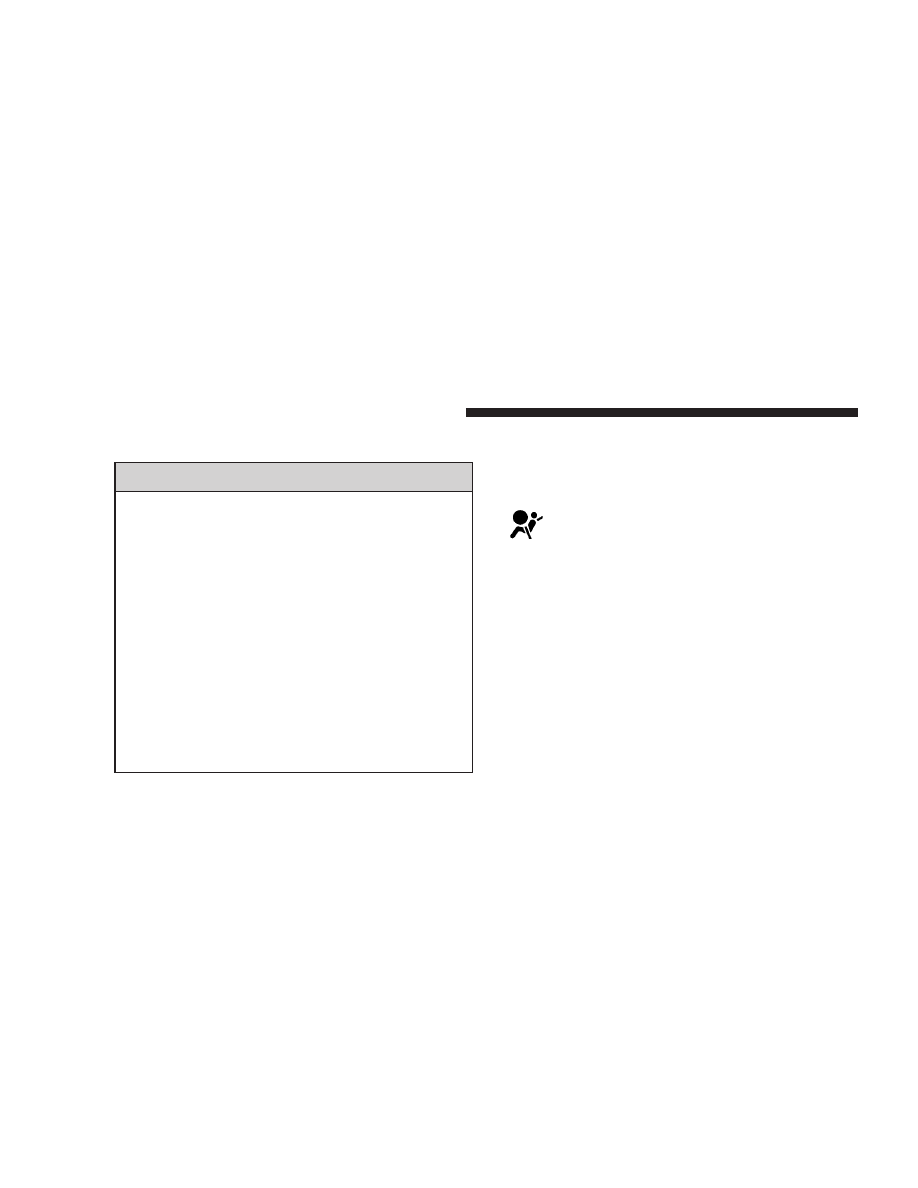Dodge 5500 Chassis Cab (2008 year). Instruction - part 4

Maintaining Your Airbag Systems
WARNING!
• Modifications to any part of the airbag system
could cause it to fail when you need it. You could be
injured because the airbags are not there to protect
you. Do not modify the components or wiring,
including adding any kind of badges or stickers to
the steering wheel hub trim cover or the upper right
side of the instrument panel. Do not modify the
front bumper, vehicle body structure, or frame.
• You need proper knee impact protection in a colli-
sion. Do not mount or locate any aftermarket equip-
ment on or behind the knee bolster.
• It is dangerous to try to repair any part of the airbag
system yourself. Be sure to tell anyone who works
on your vehicle that it has airbags.
NOTE:
Perchlorate Material – special handling may
apply, See www.dtsc.ca.gov/hazardouswaste/perchlorate
Airbag Light
You will want to have the airbags ready to
inflate for your protection in an impact. While
the airbag system is designed to be mainte-
nance free, if any of the following occurs, have
an authorized dealer service the system promptly:
• The airbag light does not come on or flickers during
the 6 to 8 seconds when the ignition switch is first
turned on.
• The light remains on or flickers after the 6 to 8 second
interval.
• The light flickers or comes on and remains on while
driving.
56
THINGS TO KNOW BEFORE STARTING YOUR VEHICLE